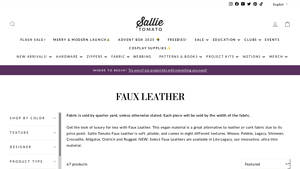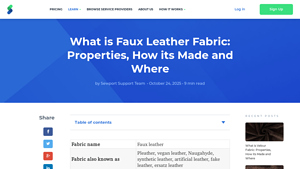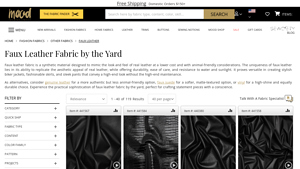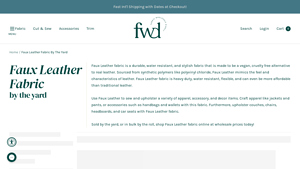Introduction: Navigating the Global Market for simulated leather fabric
In the fast-paced world of international trade, sourcing high-quality simulated leather fabric presents a unique challenge for B2B buyers looking to balance cost, durability, and aesthetic appeal. As industries across Africa, South America, the Middle East, and Europe increasingly pivot towards sustainable and cost-effective materials, understanding the nuances of faux leather becomes essential. This guide delves into the diverse types of simulated leather fabric, including polyurethane (PU) and polyvinyl chloride (PVC), along with their myriad applications in furniture, automotive, and marine sectors.
Navigating the global market for simulated leather fabric requires a strategic approach to supplier vetting, pricing structures, and compliance with regional regulations. Buyers will find valuable insights into evaluating the quality and suitability of different materials, ensuring they meet both consumer expectations and industry standards. Furthermore, the guide addresses common challenges, such as identifying reliable suppliers and negotiating favorable terms, empowering businesses to make informed purchasing decisions.
By leveraging this comprehensive resource, B2B buyers can enhance their procurement strategies, reduce costs, and position themselves competitively in the marketplace. Whether you’re outfitting a luxury hotel in Saudi Arabia or designing eco-friendly products in Vietnam, this guide equips you with the knowledge and tools necessary to successfully navigate the complexities of sourcing simulated leather fabric on a global scale.
Table Of Contents
- Top 7 Simulated Leather Fabric Manufacturers & Suppliers List
- Introduction: Navigating the Global Market for simulated leather fabric
- Understanding simulated leather fabric Types and Variations
- Key Industrial Applications of simulated leather fabric
- 3 Common User Pain Points for ‘simulated leather fabric’ & Their Solutions
- Strategic Material Selection Guide for simulated leather fabric
- In-depth Look: Manufacturing Processes and Quality Assurance for simulated leather fabric
- Practical Sourcing Guide: A Step-by-Step Checklist for ‘simulated leather fabric’
- Comprehensive Cost and Pricing Analysis for simulated leather fabric Sourcing
- Alternatives Analysis: Comparing simulated leather fabric With Other Solutions
- Essential Technical Properties and Trade Terminology for simulated leather fabric
- Navigating Market Dynamics and Sourcing Trends in the simulated leather fabric Sector
- Frequently Asked Questions (FAQs) for B2B Buyers of simulated leather fabric
- Strategic Sourcing Conclusion and Outlook for simulated leather fabric
- Important Disclaimer & Terms of Use
Understanding simulated leather fabric Types and Variations
| Type Name | Key Distinguishing Features | Primary B2B Applications | Brief Pros & Cons for Buyers |
|---|---|---|---|
| جلد البولي يوريثان | Soft, supple feel; resembles genuine leather closely | Upholstery for furniture, automotive interiors, marine applications | Pros: Cost-effective, easy to clean; Cons: May not be as durable as PVC in high-abrasion settings |
| جلد بولي كلوريد الفينيل | Stiffer, more durable; water-resistant | Commercial furniture, outdoor settings, automotive upholstery | Pros: Highly durable, resistant to wear; Cons: Less flexible, can feel less luxurious than PU |
| جلد نباتي | Made from synthetic materials, often eco-friendly | Fashion accessories, upholstery, eco-conscious product lines | Pros: Animal-friendly, various textures available; Cons: May lack the premium feel of genuine leather |
| جلد من الألياف الدقيقة | Soft texture, high durability, often stain-resistant | High-end furniture, automotive interiors, luxury goods | Pros: Soft, easy to maintain; Cons: Higher price point compared to other faux leathers |
| Suede Leatherette | Velvety texture, mimics suede | Fashion items, upholstery, accessories | Pros: Unique texture, affordable; Cons: Less water-resistant, may require more care |
What are the Characteristics and Suitability of PU Leather for B2B Buyers?
PU leather, or polyurethane leather, is a popular choice among B2B buyers due to its soft, supple texture that closely mimics genuine leather. It is widely used in upholstery for residential and commercial furniture, automotive interiors, and marine applications. When considering purchasing PU leather, buyers should evaluate the material’s cost-effectiveness, as it is significantly cheaper than genuine leather, while also being easy to clean and maintain. However, in high-abrasion environments, it may not offer the same durability as other options like PVC leather.
How Does PVC Leather Stand Out in B2B Applications?
PVC leather, known for its sturdiness and water resistance, is ideal for applications requiring enhanced durability, such as commercial furniture and outdoor settings. Its stiff nature makes it less flexible than PU leather, but it compensates with its resistance to wear and tear, making it suitable for high-traffic areas. Buyers should consider PVC leather for projects where longevity is crucial, but they may need to compromise on the luxurious feel that PU leather provides.

Illustrative image related to simulated leather fabric
What Makes Vegan Leather an Attractive Option for B2B Buyers?
Vegan leather is crafted from synthetic materials and appeals to eco-conscious brands seeking animal-friendly options. It offers a variety of textures and is suitable for fashion accessories and upholstery, aligning well with companies focused on sustainability. When purchasing vegan leather, businesses should consider its marketability as an eco-friendly product, although it may not provide the same premium feel as genuine leather, which could influence customer perceptions.
Why Choose Microfiber Leather for High-End Products?
Microfiber leather is recognized for its soft texture and high durability, often used in luxury furniture and automotive interiors. It is stain-resistant and easy to maintain, making it a practical choice for high-end applications. Buyers should weigh the higher price point against the product’s quality and longevity, as investing in microfiber leather can enhance brand prestige and customer satisfaction.
What are the Benefits and Limitations of Suede Leatherette?
Suede leatherette features a unique velvety texture, making it an appealing option for fashion items and accessories. While it is affordable and provides a stylish look, it may require more care due to its lower water resistance. B2B buyers should assess whether the aesthetic appeal of suede leatherette aligns with their brand image while considering the maintenance requirements associated with this material.

Illustrative image related to simulated leather fabric
Key Industrial Applications of simulated leather fabric
| Industry/Sector | Specific Application of simulated leather fabric | Value/Benefit for the Business | Key Sourcing Considerations for this Application |
|---|---|---|---|
| Furniture Manufacturing | Upholstery for residential and commercial furniture | Cost-effective, durable, and easy to maintain furniture covers | Ensure compliance with local safety and environmental regulations |
| Automotive | Interior upholstery for vehicles | Lightweight, stain-resistant, and customizable options | Look for suppliers with quality assurance certifications |
| Marine | Upholstery for boat cushions and interiors | Water-resistant, mildew-resistant, and UV-stable materials | Verify material specifications for marine-grade applications |
| Fashion and Accessories | Production of bags, wallets, and apparel | Versatile design options and lower production costs | Assess the range of textures and colors available |
| Hospitality | Upholstery for hotel and restaurant seating | Enhances aesthetic appeal while reducing maintenance costs | Source from suppliers with a variety of styles and durability options |
How is Simulated Leather Fabric Used in Furniture Manufacturing?
In the furniture manufacturing sector, simulated leather fabric is widely utilized for upholstery on both residential and commercial furniture. This material offers an appealing leather-like appearance while being significantly more affordable, making it an attractive option for manufacturers targeting budget-conscious consumers. Additionally, simulated leather is easy to clean and maintain, which is a crucial factor for businesses in the hospitality industry. International buyers should consider sourcing from suppliers who meet local safety standards and offer a variety of textures and colors to cater to diverse market preferences.
What Role Does Simulated Leather Play in Automotive Upholstery?
Automotive manufacturers and aftermarket suppliers frequently use simulated leather for vehicle interiors due to its lightweight properties and resistance to stains and wear. This fabric can be customized in various colors and textures, allowing manufacturers to offer unique designs that appeal to consumers. For international B2B buyers, it is essential to select suppliers with rigorous quality assurance practices to ensure that the simulated leather meets automotive industry standards, particularly regarding durability and safety.
How is Simulated Leather Fabric Beneficial in Marine Applications?
In the marine industry, simulated leather fabric is employed for upholstery on boat cushions and interiors. Its water-resistant and mildew-resistant properties make it an ideal choice for environments exposed to moisture and UV rays. This durability helps to extend the lifespan of marine upholstery, reducing the need for frequent replacements. Buyers from regions with significant marine activity should prioritize sourcing from manufacturers who provide materials specifically designed for marine applications, ensuring compliance with relevant marine safety standards.
Why is Simulated Leather Important for Fashion and Accessories?
The fashion industry has embraced simulated leather for the production of bags, wallets, and apparel due to its versatility and cost-effectiveness. Designers can select from a wide range of textures and colors, making it easier to create innovative and trendy products. For B2B buyers, sourcing simulated leather from suppliers that offer sustainable and animal-friendly options can enhance brand reputation and appeal to eco-conscious consumers. It’s crucial to assess the quality and durability of the materials to ensure they meet market expectations.
How Does Simulated Leather Enhance Hospitality Spaces?
In the hospitality sector, simulated leather is often used for upholstery in hotel and restaurant seating. This material not only adds a touch of elegance to the decor but also reduces maintenance costs due to its easy-to-clean nature. For international buyers, it is vital to work with suppliers who can provide a diverse range of styles and durability options, ensuring that the upholstery can withstand high traffic while maintaining a stylish appearance.

Illustrative image related to simulated leather fabric
3 Common User Pain Points for ‘simulated leather fabric’ & Their Solutions
Scenario 1: Sourcing Quality Simulated Leather Fabric for Diverse Applications
The Problem: B2B buyers often struggle to find high-quality simulated leather fabric that meets specific project requirements. This challenge is amplified in regions with varying quality standards and limited access to reputable suppliers. Buyers may face issues such as inconsistent textures, durability problems, and color fastness, leading to dissatisfaction from end-users and increased costs due to returns or replacements.
The Solution: To mitigate these challenges, B2B buyers should prioritize establishing relationships with reliable manufacturers and distributors that specialize in simulated leather fabrics. Before making a purchase, buyers should request samples to evaluate the quality firsthand. It’s essential to specify the required attributes such as thickness, texture, and durability ratings based on the intended use—be it for furniture, automotive, or marine applications. Additionally, leveraging online platforms that aggregate supplier reviews and certifications can help in selecting trustworthy partners. This proactive approach not only ensures high-quality materials but also builds long-term relationships that can facilitate smoother transactions and better pricing in the future.
Scenario 2: Managing Cost Pressures While Ensuring Product Quality
The Problem: Many B2B buyers face significant pressure to reduce costs without compromising on the quality of simulated leather fabric. This is particularly pertinent in competitive markets where margins are thin, and customers expect premium products at lower prices. The challenge lies in balancing affordability with the risk of sourcing inferior materials that can lead to customer dissatisfaction and brand damage.

Illustrative image related to simulated leather fabric
The Solution: Buyers should adopt a strategic sourcing approach by considering bulk purchasing agreements and long-term contracts with manufacturers. This can lead to reduced unit costs while ensuring consistent quality. Buyers should also evaluate alternative materials that provide similar benefits at a lower price point, such as specialized polyurethane or vinyl blends. Additionally, conducting a total cost of ownership analysis will help in understanding the long-term savings associated with higher-quality products, which may offer better durability and lower maintenance costs. Finally, engaging in collaborative discussions with suppliers about product development can yield innovative solutions that meet both budgetary and quality requirements.
Scenario 3: Overcoming Environmental and Sustainability Concerns
The Problem: As global awareness regarding environmental sustainability grows, B2B buyers are increasingly pressured to select materials that align with eco-friendly practices. This includes concerns about the environmental impact of synthetic materials like simulated leather, which may be perceived as harmful due to their plastic-based composition. Buyers may find it challenging to navigate these concerns while still fulfilling customer demands for high-quality products.
The Solution: B2B buyers can address these concerns by sourcing eco-friendly simulated leather options that utilize sustainable manufacturing practices and recyclable materials. When evaluating suppliers, buyers should seek those who provide transparency about their production processes and environmental impact, including certifications such as OEKO-TEX or Global Recycle Standard. Additionally, promoting the benefits of modern faux leather—such as its durability and longevity, which reduce waste—can help to position these materials as viable alternatives to genuine leather. Finally, implementing a clear communication strategy that highlights the sustainability of the chosen materials can enhance brand reputation and attract environmentally conscious customers. This not only fulfills market demand but also aligns with a growing trend toward corporate responsibility in the textile industry.
Strategic Material Selection Guide for simulated leather fabric
When selecting simulated leather fabric for various applications, it’s essential to understand the different materials available in the market. Each material offers distinct properties, advantages, and disadvantages that can significantly impact product performance and suitability for specific applications. Below, we analyze four common materials used in simulated leather fabric, focusing on their key properties, pros and cons, and considerations for international B2B buyers.
What Are the Key Properties of Polyurethane (PU) Leather?
Polyurethane leather, often referred to as PU leather, is a popular choice due to its softness and flexibility. It is produced by applying a polymer coating to a fabric backing, which gives it a leather-like appearance. PU leather is known for its durability, water resistance, and ease of cleaning, making it suitable for various applications, including furniture upholstery and automotive interiors.

Illustrative image related to simulated leather fabric
Pros and Cons:
The primary advantages of PU leather include its lower cost compared to genuine leather (up to 75% less), and its resistance to stains and mildew. However, it may not perform as well in extreme temperatures, which could affect its longevity in harsh environments.
Impact on Application:
PU leather is compatible with a wide range of media, making it ideal for both residential and commercial applications. Its flexibility in color and texture allows for creative designs in upholstery.
Considerations for International Buyers:
Buyers from regions like Africa and the Middle East should ensure that PU leather complies with local standards for fire safety and environmental regulations. Familiarity with ASTM and DIN standards can be beneficial.
How Does Polyvinyl Chloride (PVC) Leather Compare?
Polyvinyl chloride (PVC) leather, commonly known as vinyl, is another synthetic alternative that offers durability and affordability. It is often used in applications requiring a robust material, such as marine upholstery and commercial furniture.
Pros and Cons:
PVC leather is highly resistant to moisture and easy to clean, making it suitable for outdoor and high-traffic environments. However, it can be less breathable than PU leather, leading to discomfort in warmer climates.
Impact on Application:
PVC leather is particularly effective in applications where water resistance is crucial, such as in marine environments. Its durability makes it a preferred choice for items that undergo heavy use.
Considerations for International Buyers:
Buyers should be aware of the environmental impact of PVC, as it can release harmful chemicals during production and disposal. Compliance with international environmental standards is essential, especially in Europe.
What Are the Benefits of Microfiber Leather?
Microfiber leather is a synthetic material made from ultra-fine polyester and polyamide fibers. This material mimics the texture and appearance of genuine leather while offering unique benefits.
Pros and Cons:
Microfiber leather is known for its softness, breathability, and stain resistance. It is also lightweight and easy to maintain. However, it can be more expensive than PU and PVC leathers, which may deter some buyers.
Impact on Application:
Microfiber leather is suitable for high-end applications, such as luxury furniture and fashion accessories, due to its premium feel and appearance.
Considerations for International Buyers:
Buyers should verify the sourcing and manufacturing processes of microfiber leather to ensure compliance with ethical standards, particularly in regions sensitive to animal welfare.

Illustrative image related to simulated leather fabric
What Makes Recycled Leather a Sustainable Choice?
Recycled leather is made from leftover scraps of genuine leather that are processed and reconstituted into a new product. This material is gaining traction due to its sustainability.
Pros and Cons:
The key advantage of recycled leather is its reduced environmental impact, as it utilizes waste materials. However, its durability can vary depending on the quality of the recycled content.
Impact on Application:
Recycled leather is ideal for eco-conscious brands looking to reduce their carbon footprint while offering a luxurious product. Its unique texture can also appeal to consumers seeking distinctive items.
Considerations for International Buyers:
Buyers should ensure that recycled leather meets local regulations regarding sustainability and waste management, especially in markets like Europe where eco-labeling is prevalent.
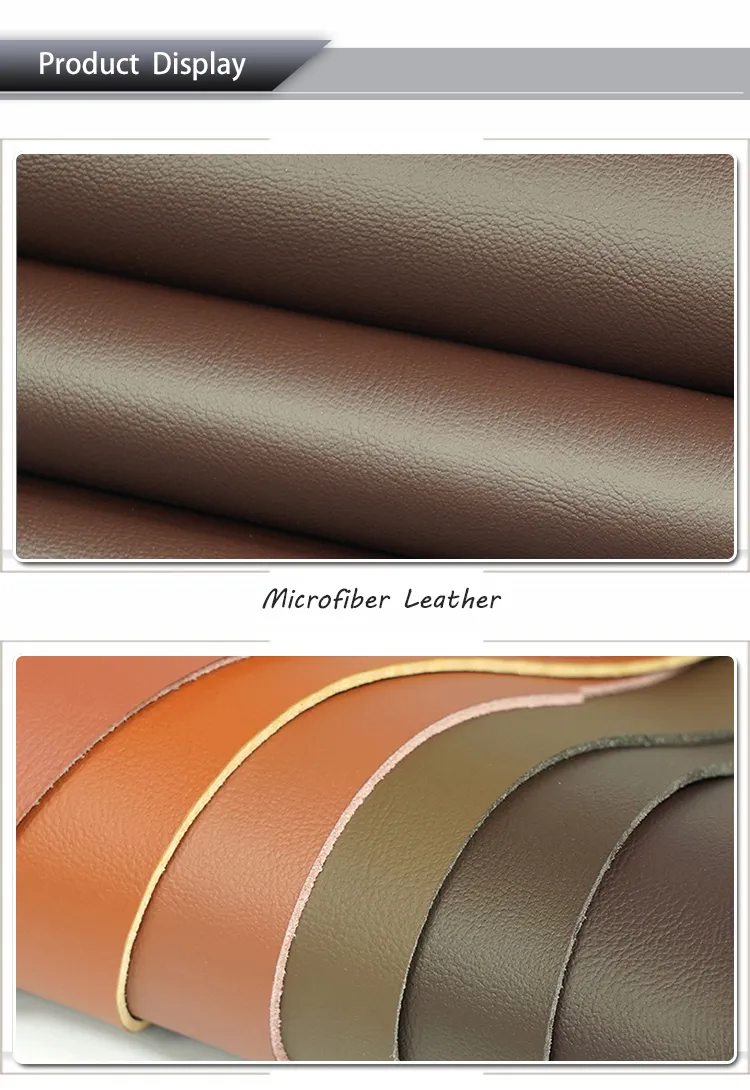
Illustrative image related to simulated leather fabric
Summary Table of Simulated Leather Materials
| المواد | Typical Use Case for simulated leather fabric | Key Advantage | Key Disadvantage/Limitation | Relative Cost (Low/Med/High) |
|---|---|---|---|---|
| Polyurethane (PU) | Furniture upholstery, automotive interiors | Soft, flexible, and easy to clean | May not perform well in extreme temps | منخفضة |
| Polyvinyl Chloride (PVC) | Marine upholstery, commercial furniture | Highly water-resistant | Less breathable than PU leather | منخفضة |
| جلد من الألياف الدقيقة | Luxury furniture, fashion accessories | Soft, breathable, and stain-resistant | Higher cost compared to PU and PVC | Med |
| Recycled Leather | Eco-friendly products, luxury items | Sustainable and reduces waste | Durability can vary based on quality | Med |
This comprehensive analysis provides international B2B buyers with the insights needed to make informed decisions about simulated leather fabric, ensuring that they select the most suitable material for their specific applications and market requirements.
In-depth Look: Manufacturing Processes and Quality Assurance for simulated leather fabric
What Are the Key Manufacturing Processes for Simulated Leather Fabric?
The manufacturing of simulated leather, commonly known as faux leather, involves a series of well-defined stages that ensure the final product meets both aesthetic and functional standards. Here are the main stages of the manufacturing process:
1. Material Preparation: What Raw Materials Are Used?
The primary raw materials for simulated leather include a base fabric (typically polyester or cotton) and a polymer coating, most commonly polyurethane (PU) or polyvinyl chloride (PVC). The initial step involves sourcing high-quality base fabrics and preparing them for coating. This preparation may include treatments to enhance adhesion, durability, and water resistance.
2. Forming: How Is the Leather-Like Texture Created?
In the forming stage, the prepared base fabric undergoes a coating process where the selected polymer is applied. This can be achieved through several techniques, including:

Illustrative image related to simulated leather fabric
- Roll Coating: The polymer is applied evenly across the fabric using large rollers, ensuring a consistent thickness.
- Spray Coating: This method allows for more intricate designs and textures by spraying the polymer onto the fabric.
- Hot Pressing: This technique involves applying heat and pressure to create a leather-like grain pattern on the surface of the polymer.
These methods not only provide the desired texture but also contribute to the durability and performance characteristics of the faux leather.
3. Assembly: What Steps Are Taken to Create the Final Product?
Once the fabric has been coated and textured, it is cut and assembled into various products, including upholstery, fashion items, and accessories. The assembly process involves sewing and finishing, where edges are treated to prevent fraying and enhance the overall aesthetic. This stage may also include additional treatments, such as adding waterproofing agents or stain resistance.
4. Finishing: How Is the Product Enhanced?
The finishing stage is crucial for enhancing the appearance and performance of simulated leather. This may involve applying a topcoat to improve abrasion resistance, UV protection, and ease of cleaning. The finished product is then inspected for quality and consistency before packaging.
What Quality Assurance Measures Are Implemented in Simulated Leather Production?
Quality assurance (QA) is integral to the production of simulated leather, ensuring that the end product meets both industry standards and customer expectations. Here’s how QA is typically structured:
Relevant International Standards: Which Certifications Should B2B Buyers Look For?
For B2B buyers, understanding relevant international standards is essential. The ISO 9001 certification is a fundamental quality management standard that indicates a company’s commitment to quality. Additionally, industry-specific certifications such as CE marking (for products sold in the European Economic Area) and API (American Petroleum Institute) standards for specific applications can further ensure product reliability and compliance.
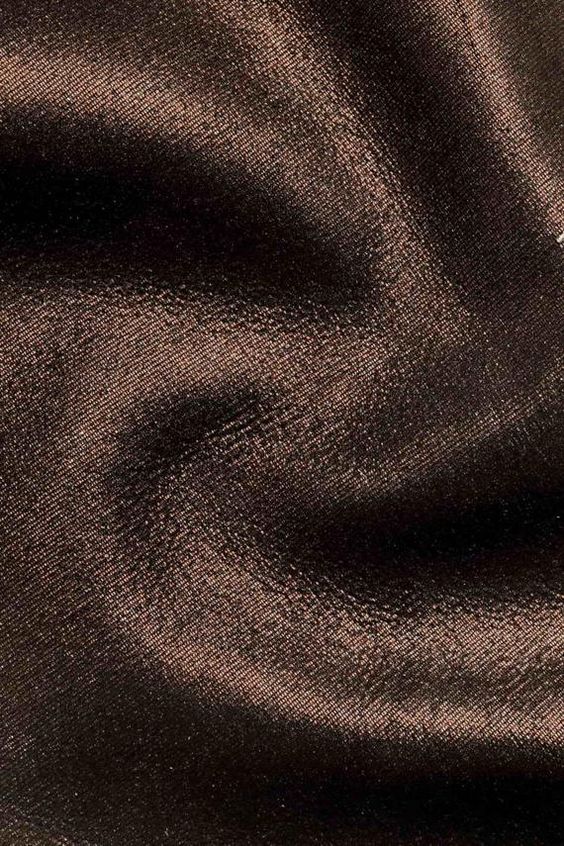
Illustrative image related to simulated leather fabric
Key Quality Control Checkpoints: What Are the Stages of Quality Inspection?
Quality control (QC) in simulated leather manufacturing typically involves several checkpoints:
- Incoming Quality Control (IQC): This initial inspection checks raw materials for compliance with specifications before production begins.
- In-Process Quality Control (IPQC): During the manufacturing process, random samples are taken to ensure that the coating and forming processes meet quality standards.
- Final Quality Control (FQC): After the product is finished, a comprehensive inspection is conducted to verify that the end product meets all specifications, including durability, texture, and appearance.
Common Testing Methods: How Are Products Evaluated for Quality?
Simulated leather undergoes various tests to assess its quality, including:
- Abrasion Resistance Testing: Evaluates the durability of the surface against wear.
- Water Resistance Testing: Determines the material’s ability to repel water and resist stains.
- Colorfastness Testing: Assesses how well the colors hold up under exposure to light and washing.
These tests are critical in ensuring that the simulated leather can withstand the rigors of its intended applications, whether in furniture, automotive, or fashion industries.
How Can B2B Buyers Verify Supplier Quality Control?
For B2B buyers, especially those operating in diverse markets such as Africa, South America, the Middle East, and Europe, ensuring supplier quality is paramount. Here are some actionable steps to verify QC processes:
1. Conducting Audits: How Can Buyers Evaluate Supplier Practices?
Regular audits of suppliers can provide insight into their manufacturing and quality control processes. Buyers should inquire about the frequency and depth of these audits, as well as whether they are conducted by third-party organizations.
2. Requesting Quality Reports: What Documentation Is Important?
Buyers should request detailed quality reports from suppliers, including results from IQC, IPQC, and FQC stages. These documents should outline compliance with relevant standards and any corrective actions taken in response to quality issues.
3. Utilizing Third-Party Inspection Services: How Can Buyers Ensure Objectivity?
Engaging third-party inspection services can provide an unbiased assessment of a supplier’s products. These services can perform on-site inspections and testing, ensuring that the products meet specified quality standards before shipment.
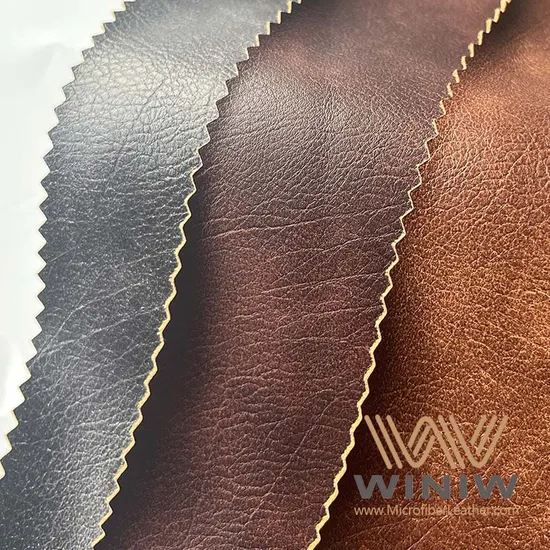
Illustrative image related to simulated leather fabric
What Are the Quality Control Nuances for International B2B Buyers?
International buyers should be aware of specific nuances in quality control that may vary by region. For example, compliance with local regulations may differ significantly between markets such as Europe and the Middle East. Understanding these differences is crucial for ensuring product acceptance and minimizing delays in customs clearance.
Additionally, cultural differences may influence the expectations around quality and service. Establishing clear communication channels and setting mutual expectations can help mitigate these challenges and foster successful B2B relationships.
Conclusion: Ensuring Quality in Simulated Leather Fabric
In conclusion, the manufacturing processes and quality assurance measures for simulated leather fabric are multifaceted and essential for ensuring product reliability. For B2B buyers, understanding these processes not only aids in selecting the right suppliers but also ensures that the products meet the necessary standards for their respective markets. By focusing on quality control, buyers can confidently invest in simulated leather solutions that align with their business needs and customer expectations.
Practical Sourcing Guide: A Step-by-Step Checklist for ‘simulated leather fabric’
To ensure a successful procurement process for simulated leather fabric, this guide provides a structured checklist designed for international B2B buyers. The steps outlined will help you navigate the complexities of sourcing, from defining your needs to evaluating potential suppliers.
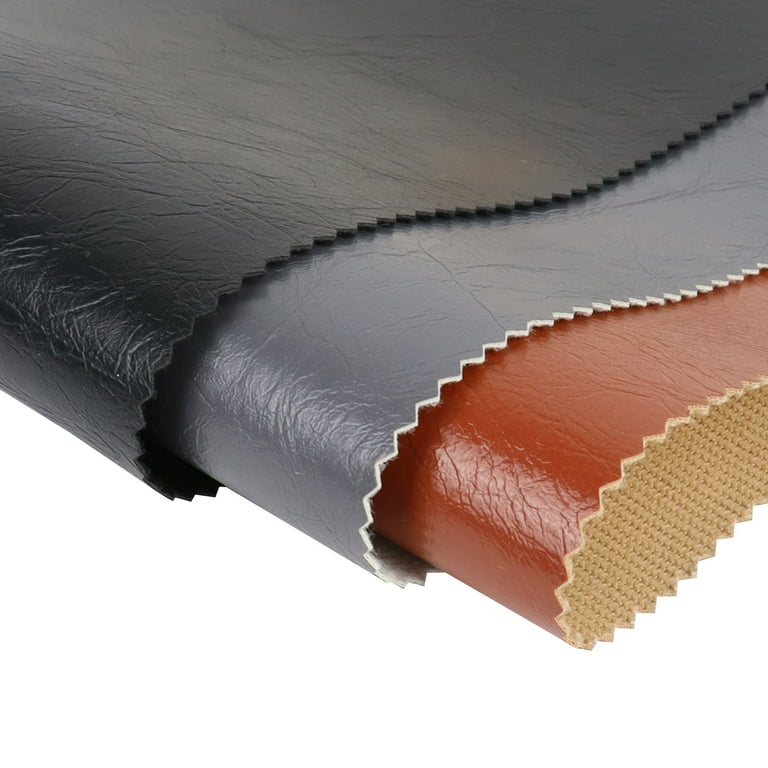
Illustrative image related to simulated leather fabric
Step 1: Define Your Technical Specifications
Clearly outline the specifications for the simulated leather fabric you require. This includes determining the type (PU or PVC), thickness, texture, and color. Defining these parameters upfront will help streamline your sourcing process and ensure you receive products that meet your exact needs.
- Texture Options: Consider the various textures available such as pebbled, smooth, or embossed to match your design requirements.
- Performance Criteria: Specify any performance attributes needed, such as water resistance, stain resistance, or UV stability.
Step 2: Research Potential Suppliers
Conduct thorough research to identify suppliers that specialize in simulated leather fabrics. Look for companies with a strong reputation in the industry and positive feedback from previous clients.
- Online Reviews: Utilize platforms like LinkedIn or industry-specific forums to gather insights about supplier reliability.
- Industry References: Reach out to industry contacts for recommendations on reputable suppliers.
Step 3: Evaluate Supplier Certifications
Before proceeding with any supplier, verify their certifications and compliance with international quality standards. This ensures that the products you receive are safe and meet required specifications.

Illustrative image related to simulated leather fabric
- ISO Certifications: Check for ISO certifications that indicate adherence to quality management systems.
- Environmental Compliance: Look for certifications related to sustainability, such as OEKO-TEX, which can assure you of environmentally friendly production processes.
Step 4: Request Samples
Always request samples of the simulated leather fabric before making a bulk order. This step allows you to assess the quality, texture, and color accuracy firsthand.
- Quality Assessment: Examine the sample for durability, flexibility, and ease of cleaning.
- Match Your Requirements: Ensure that the sample aligns with the specifications you previously defined.
Step 5: Negotiate Pricing and Terms
Once you have identified potential suppliers and assessed their products, initiate negotiations on pricing and terms. Understanding market rates can give you leverage in discussions.
- Bulk Discounts: Inquire about pricing for larger orders, as many suppliers offer discounts for bulk purchases.
- Payment Terms: Clarify payment methods and terms to avoid any misunderstandings later in the process.
Step 6: Confirm Shipping and Delivery Details
Discuss shipping options and delivery timelines with your chosen supplier to ensure that your order arrives on time.
- Logistics Partners: Ask if the supplier has preferred logistics partners to ensure safe and timely delivery.
- Customs and Duties: Be aware of any customs regulations or duties that may apply when importing simulated leather fabric to your region.
Step 7: Establish a Communication Plan
Maintain clear lines of communication with your supplier throughout the sourcing process. Regular updates can help prevent misunderstandings and ensure a smooth transaction.
- Point of Contact: Designate a specific person for communication on both sides to streamline interactions.
- Feedback Mechanism: Set up a method for providing feedback on samples and initial shipments, which can help improve future orders.
Following this structured checklist will guide you through the procurement of simulated leather fabric effectively, ensuring that you make informed decisions that align with your business needs.
Comprehensive Cost and Pricing Analysis for simulated leather fabric Sourcing
What Are the Key Cost Components in Simulated Leather Fabric Sourcing?
When sourcing simulated leather fabric, understanding the cost structure is crucial for effective budgeting and negotiations. The primary cost components include:
-
Materials: The type of synthetic material—such as PU (polyurethane) or PVC (polyvinyl chloride)—significantly influences the cost. PU leather, for instance, is often more expensive than PVC due to its higher quality and closer resemblance to genuine leather.
-
Labor: Labor costs vary based on the manufacturing location. Countries with lower labor costs, such as certain regions in Asia, may offer more competitive pricing compared to European manufacturers.
-
Manufacturing Overhead: This encompasses utilities, rent, and administrative expenses associated with the production facility. Efficient operations can lower these costs, which is reflected in the pricing of the fabric.
-
Tooling: The cost of specialized machinery and molds for production can be substantial, particularly if custom designs or unique textures are required. Investing in advanced technology can enhance production efficiency but may increase initial costs.
-
Quality Control (QC): Ensuring the fabric meets specified standards incurs costs related to testing and inspection. Implementing stringent QC measures can prevent costly defects but may also increase the overall price.
-
Logistics: Shipping costs depend on the distance from the manufacturer to the buyer and the chosen shipping method. Incoterms also play a role in determining who bears these costs and can significantly affect the total landed cost.
-
Margin: Suppliers typically add a margin to cover their costs and profit. This margin can vary based on the supplier’s position in the market and their operational efficiency.
How Do Price Influencers Affect Simulated Leather Fabric Costs?
Several factors influence the pricing of simulated leather fabric, impacting both the buyer’s costs and negotiation strategies:
-
Volume/MOQ: Minimum order quantities (MOQs) can significantly affect pricing. Bulk purchases often lead to discounts, making it essential for buyers to assess their needs carefully.
-
Specifications/Customization: Customized fabrics, such as those with specific colors, textures, or patterns, usually come at a premium. Buyers should weigh the necessity of custom features against their budget constraints.
-
Materials: The choice of base materials affects both quality and price. High-quality PU leather may command higher prices but offers durability and aesthetic appeal.
-
Quality/Certifications: Fabrics that meet specific industry certifications (e.g., fire resistance, environmental standards) may incur higher costs but provide added value and assurance of quality.
-
Supplier Factors: The supplier’s reputation, reliability, and production capabilities can influence pricing. Long-term partnerships with reputable suppliers may yield better terms and pricing.
-
Incoterms: Understanding shipping terms is crucial. CIF (Cost, Insurance, and Freight) may seem attractive, but buyers should consider whether they prefer to manage shipping themselves to save costs.
What Are the Best Tips for Buyers Sourcing Simulated Leather Fabrics?
For international B2B buyers, particularly from Africa, South America, the Middle East, and Europe, strategic sourcing of simulated leather fabric can lead to significant cost savings:
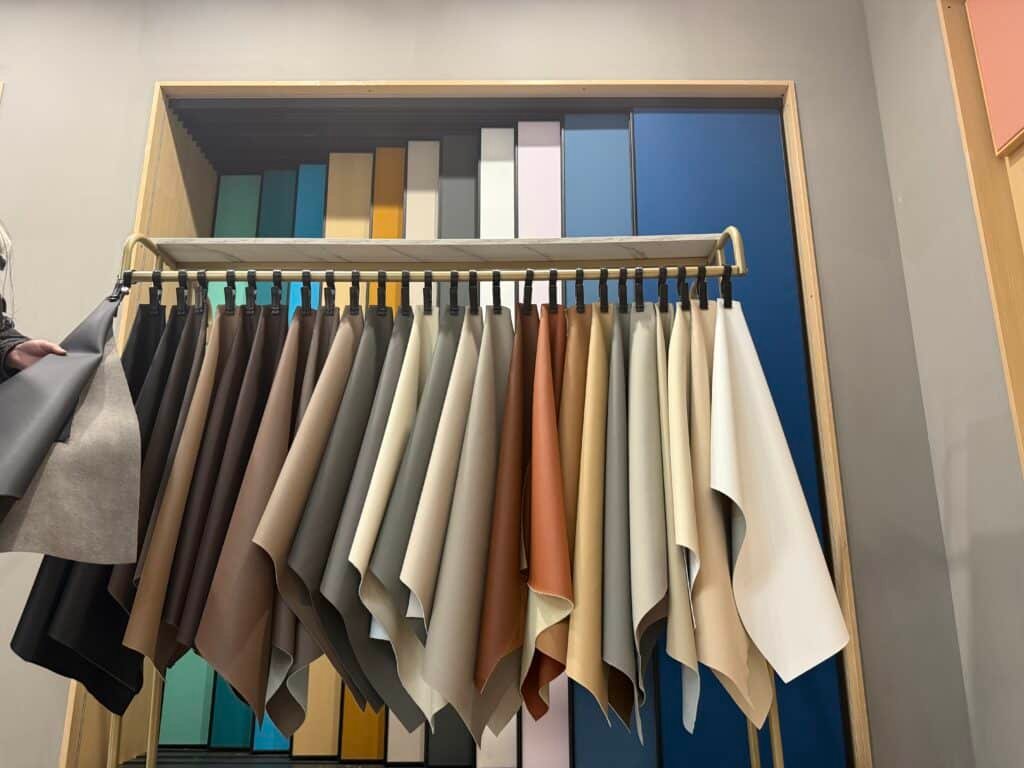
Illustrative image related to simulated leather fabric
-
Negotiate Effectively: Leverage your purchasing power by negotiating prices, especially when placing large orders. Suppliers may be more flexible on pricing for established relationships.
-
Consider Total Cost of Ownership: Beyond the initial purchase price, evaluate the long-term costs associated with durability, maintenance, and potential replacements. Higher-quality materials may reduce overall costs over time.
-
Understand Pricing Nuances: Be aware that prices can fluctuate based on market demand, raw material costs, and seasonal factors. Keeping an eye on these trends can help in timing your purchases effectively.
-
Explore Local Suppliers: Depending on the region, sourcing from local suppliers can reduce shipping costs and lead times. Evaluate the trade-offs between local and international sourcing.
-
Request Samples: Before committing to large orders, request samples to assess quality, texture, and compatibility with your intended application. This can prevent costly mistakes and ensure satisfaction with the final product.
In summary, navigating the cost and pricing landscape of simulated leather fabric requires a comprehensive understanding of the various components and influencing factors. By leveraging this knowledge, buyers can make informed decisions that align with their budget and quality requirements.
Alternatives Analysis: Comparing simulated leather fabric With Other Solutions
Understanding Alternatives to Simulated Leather Fabric
In the quest for effective upholstery solutions, simulated leather fabric has emerged as a popular choice among businesses. However, several alternative materials also offer unique benefits and functionalities. This analysis provides an overview of how simulated leather fabric compares with other viable alternatives, helping B2B buyers make informed decisions based on performance, cost, ease of implementation, maintenance, and best use cases.
Comparison Table
| Comparison Aspect | Simulated Leather Fabric | PVC Vinyl Fabric | Natural Leather |
|---|---|---|---|
| Performance | Durable, water-resistant | High durability, UV resistant | Excellent durability, natural aging |
| Cost | Cost-effective (up to 75% less than genuine leather) | Generally low-cost | Higher cost (premium pricing) |
| Ease of Implementation | Easy to cut and sew | Simple to install | Requires skilled labor for crafting |
| Maintenance | Easy to clean, stain resistant | Easy to clean, but can be sticky | Requires regular conditioning and care |
| Best Use Case | Furniture, automotive, marine | Affordable upholstery for commercial use | Luxury items, high-end furniture |
Detailed Breakdown of Alternatives
What is PVC Vinyl Fabric and Its Benefits?
PVC vinyl fabric is a synthetic material that mimics the appearance of leather while providing robust durability. Its resistance to UV rays makes it ideal for outdoor applications. The affordability of PVC makes it a favored choice for commercial upholstery, such as in hotels and restaurants. However, it may not offer the same level of comfort and breathability as simulated leather, and prolonged exposure to heat can cause it to become sticky.
How Does Natural Leather Compare?
Natural leather is a time-tested material known for its luxurious appearance and feel. It ages beautifully and develops a unique patina over time, making it highly desirable for high-end furniture and accessories. However, its premium cost and the need for regular maintenance can deter some businesses. Additionally, sourcing natural leather raises ethical concerns regarding animal welfare, which is increasingly important for many consumers.
Conclusion: How Can B2B Buyers Choose the Right Solution?
Selecting the appropriate upholstery material depends on various factors, including budget constraints, intended use, and desired aesthetics. For businesses focused on cost-effectiveness and ease of maintenance, simulated leather fabric presents a compelling option. Conversely, if the project demands a high-end finish and durability, natural leather may be the better choice despite its higher cost. PVC vinyl fabric serves as a strong alternative for commercial applications where budget and high durability are critical. Ultimately, understanding these alternatives allows B2B buyers to align their choices with their project requirements and brand values.
Essential Technical Properties and Trade Terminology for simulated leather fabric
What Are the Key Technical Properties of Simulated Leather Fabric?
When considering simulated leather fabric for procurement, understanding its critical technical properties is essential for ensuring quality and suitability for various applications. Here are some key specifications to consider:
1. Material Composition
Simulated leather typically comprises either polyurethane (PU) or polyvinyl chloride (PVC). PU leather is known for its softness and flexibility, closely mimicking the feel of genuine leather, while PVC is more rigid and often less expensive. For B2B buyers, knowing the material composition aids in selecting the right fabric for applications ranging from upholstery to automotive interiors.
2. Abrasion Resistance
Abrasion resistance measures how well a fabric can withstand wear and tear, a crucial factor for high-use areas like furniture and automotive seating. Fabrics with high abrasion resistance ratings are more durable, reducing the frequency of replacements and ultimately lowering costs. For buyers, evaluating this property can prevent premature wear and enhance product longevity.
3. Water and Stain Resistance
Simulated leather is often treated to be water-resistant and stain-resistant, making it easier to maintain compared to genuine leather. This property is especially important for industries such as hospitality and automotive, where cleanliness and durability are paramount. Buyers should look for fabrics that specify these resistance levels to ensure they meet their operational needs.
4. Fire Retardancy
For applications in public spaces or vehicles, fire retardancy is a critical specification. This property indicates the material’s ability to resist ignition and slow the spread of flames. Understanding fire safety ratings is vital for compliance with local regulations and safety standards, making it an important consideration for procurement decisions.
5. Thickness and Weight
The thickness and weight of simulated leather can significantly affect its application. Thicker materials are often more durable but may be less flexible, while lighter options are easier to handle but may not provide the same level of durability. Buyers should assess these specifications based on the intended use to ensure the right balance of quality and performance.
What Are Common Trade Terms Used in Simulated Leather Fabric Procurement?
Familiarity with industry jargon can facilitate smoother transactions and negotiations. Here are some common trade terms relevant to simulated leather fabric:
1. OEM (Original Equipment Manufacturer)
OEM refers to companies that produce parts or equipment that may be marketed by another manufacturer. In the context of simulated leather, it often involves suppliers who create custom fabrics tailored to specific client needs. Understanding OEM relationships can help buyers secure unique products that align with their brand.
2. MOQ (Minimum Order Quantity)
MOQ denotes the smallest quantity of a product that a supplier is willing to sell. This is crucial for budget-conscious buyers, as high MOQs can lead to excess inventory. Negotiating MOQs can enable businesses to manage cash flow effectively while ensuring they have sufficient materials for production.
3. RFQ (Request for Quotation)
An RFQ is a document sent to suppliers requesting pricing and terms for specific products. For B2B buyers, issuing an RFQ for simulated leather can streamline the procurement process, allowing for competitive pricing and better supplier selection.
4. Incoterms (International Commercial Terms)
Incoterms are a set of international rules that define the responsibilities of buyers and sellers in global trade. Familiarity with terms like FOB (Free on Board) and CIF (Cost, Insurance, and Freight) can help buyers understand shipping costs and responsibilities, which is particularly important when sourcing from international suppliers.
5. Lead Time
Lead time refers to the amount of time it takes from placing an order to receiving the goods. Knowing the lead time for simulated leather fabric is essential for inventory planning and ensuring timely project completion. Buyers should always confirm lead times during negotiations to avoid delays.

Illustrative image related to simulated leather fabric
By understanding these technical properties and trade terms, B2B buyers can make informed decisions when sourcing simulated leather fabric, enhancing their procurement strategies and ultimately their bottom line.
Navigating Market Dynamics and Sourcing Trends in the simulated leather fabric Sector
What Are the Current Market Dynamics and Key Trends in the Simulated Leather Fabric Sector?
The simulated leather fabric sector is witnessing significant growth driven by several global factors. The rising demand for cost-effective, durable, and versatile materials across various industries such as automotive, furniture, and fashion is reshaping sourcing strategies for international B2B buyers. Key trends include the increased adoption of polyurethane (PU) leather, which offers a softer texture closely resembling genuine leather while being significantly more affordable—up to 75% less. Additionally, the emergence of advanced manufacturing technologies is facilitating the production of high-quality faux leather options that cater to diverse aesthetic and functional requirements.
In regions like Africa, South America, the Middle East, and Europe, there is a pronounced shift towards online sourcing platforms, enabling buyers to access a broader array of products with competitive pricing. This trend is particularly beneficial for buyers in emerging markets, where traditional supply chains may be less efficient. Furthermore, the demand for customizable solutions is on the rise, encouraging manufacturers to offer bespoke designs and colors tailored to specific market needs. Another notable trend is the increasing importance of ethical sourcing, which is influencing purchasing decisions among B2B buyers, particularly in Europe and the Middle East.
How Is Sustainability Influencing the Sourcing of Simulated Leather Fabric?
Sustainability has become a critical consideration in the simulated leather fabric sector, impacting both sourcing strategies and consumer preferences. With growing awareness of environmental issues, many B2B buyers are prioritizing suppliers that adhere to ethical sourcing practices and sustainable manufacturing processes. The simulated leather industry is increasingly focusing on reducing its environmental footprint by utilizing recycled materials and eco-friendly production methods.
Buyers are encouraged to seek suppliers that hold relevant certifications, such as Global Organic Textile Standard (GOTS) or OEKO-TEX Standard 100, which indicate compliance with stringent environmental and safety standards. Additionally, the shift towards vegan materials is gaining traction, as buyers recognize the importance of animal welfare and the demand for cruelty-free products. By sourcing simulated leather that is both environmentally friendly and ethically produced, companies can enhance their brand reputation and appeal to a growing demographic of environmentally-conscious consumers.

Illustrative image related to simulated leather fabric
What Is the Brief Evolution of Simulated Leather Fabric in the B2B Context?
The evolution of simulated leather fabric dates back to the early 20th century, with the invention of synthetic alternatives designed to mimic the appearance and feel of genuine leather. The initial focus was primarily on affordability and practicality, catering to various sectors, including automotive and upholstery. As technology advanced, the quality and diversity of synthetic leathers improved significantly, giving rise to materials such as PU leather, which offers enhanced durability and aesthetic appeal.
In recent years, the simulated leather market has seen a shift towards innovation, with manufacturers developing new textures, colors, and finishes that meet the evolving demands of B2B buyers. This evolution is not just about aesthetics; it also encompasses performance attributes such as water resistance, stain resistance, and ease of maintenance, making simulated leather an increasingly attractive option for a wide range of applications. As the market continues to evolve, B2B buyers must stay informed about these developments to make educated sourcing decisions that align with their business goals and consumer expectations.
Frequently Asked Questions (FAQs) for B2B Buyers of simulated leather fabric
-
How do I choose the right type of simulated leather fabric for my project?
When selecting simulated leather fabric, consider the end use of the product. For upholstery in high-traffic areas, opt for durable materials like PU leather, which offers excellent resistance to stains and wear. If the fabric will be exposed to outdoor elements, look for water-resistant options. Additionally, evaluate the texture and aesthetic—options range from smooth finishes to embossed patterns that mimic genuine leather. Always request samples to assess the fabric’s feel and appearance before finalizing your order. -
What are the advantages of using simulated leather over genuine leather?
Simulated leather offers numerous benefits, including cost-effectiveness, as it can be up to 75% cheaper than genuine leather. It is easier to maintain since it is water and stain-resistant, often requiring only a damp cloth for cleaning. Moreover, simulated leather is available in a wide variety of colors and textures, allowing for greater design flexibility. It is also an animal-friendly option, making it suitable for eco-conscious businesses seeking sustainable materials. -
What are the typical minimum order quantities (MOQs) for simulated leather fabric?
Minimum order quantities for simulated leather can vary significantly by supplier and the specific type of fabric. Generally, MOQs can range from 50 to 500 yards, depending on the manufacturer and the complexity of the design. When sourcing, inquire about bulk order discounts and shipping costs, as these can affect overall pricing. If your needs are smaller, some suppliers may offer a selection of fabrics available by the yard, which can be beneficial for smaller projects or samples. -
How can I ensure the quality of simulated leather before purchasing?
To ensure quality, request samples from suppliers before placing larger orders. Check for certifications or compliance with international standards, particularly if the fabric will be used in sensitive applications such as automotive or healthcare. Additionally, inquire about the supplier’s manufacturing processes and quality control measures. Establishing a clear communication channel for discussing specifications and potential issues can also enhance your confidence in the product’s quality. -
What payment terms are typically offered by suppliers of simulated leather?
Payment terms can vary widely among suppliers, but common options include upfront payment, a deposit with the balance due upon delivery, or net terms (e.g., net 30 or net 60). Some suppliers may also accept letters of credit, which can provide additional security for international transactions. It’s advisable to clarify payment terms early in negotiations to avoid misunderstandings and to ensure they align with your financial processes. -
How do I vet potential suppliers of simulated leather fabric?
Vetting suppliers involves researching their reputation, production capabilities, and compliance with industry standards. Check online reviews, request references from previous clients, and verify their business licenses. Additionally, consider visiting their manufacturing facilities if possible or using third-party inspection services to assess their operations. Establishing a strong relationship and clear communication can also help ensure a successful partnership. -
What are the logistics considerations when importing simulated leather fabric?
When importing simulated leather, consider shipping methods, lead times, and customs regulations. Air freight is faster but often more expensive than sea freight, which is more economical for larger orders. Be aware of import duties and tariffs that may apply, and ensure that the necessary documentation is in order to avoid delays. Collaborating with a logistics partner familiar with international trade can streamline the process and minimize potential issues. -
Can I customize simulated leather fabric for my brand?
Yes, many suppliers offer customization options for simulated leather fabric, including color matching, embossing, and unique textures. When discussing customization, clearly outline your specifications and desired outcomes. Be aware that custom orders may have higher MOQs and longer lead times. Ensure you receive detailed samples of any customizations to evaluate their quality and suitability for your project before placing a full order.
Top 7 Simulated Leather Fabric Manufacturers & Suppliers List
1. Decorative Fabrics Direct – PU Leather & Faux Leather
Domain: decorativefabricsdirect.com
Registered: 2004 (21 years)
مقدمة: PU Leather & Faux Leather | Vinyl Upholstery Fabric. Terms: Free Shipping Coupon Code: SHIPFREE for Most $199 Orders. Available for wholesale purchase by the yard or full roll. Brands include Naugahyde, Omnova Boltaflex, Nassimi, and Spradling. Suitable for furniture, automotive, marine, and commercial projects. Features: durable, easy to clean, available in rich colors, significantly lower cost t…
2. Sallie Tomato – Faux Leather Collection
Domain: sallietomato.com
Registered: 2015 (10 years)
مقدمة: Faux Leather collection by Sallie Tomato offers a variety of vegan materials as an alternative to leather or cork fabric. The fabrics are soft, pliable, and available in eight different textures: Weave, Pebble, Legacy, Shimmer, Crocodile, Alligator, Ostrich, and Rugged. Select Faux Leathers are also available in Lite Legacy, an ultra-thin material. The fabrics are sold by quarter yard, with a pric…
3. Fabric Mill – Faux Leather & Vinyl Fabrics
Domain: fabricmill.com
Registered: 1997 (28 years)
مقدمة: Faux leather and vinyl fabrics offer stylish, durable alternatives to genuine leather. Ideal for upholstery, cushions, and accessories, these synthetic materials are easy to work with and available by the yard. Key characteristics include:
– Durability: 50,000 to 100,000 double rubs, varies by fabric type.
– Weight: Medium to heavy.
– Opaqueness: Opaque.
– Colorfastness: High, resists fading.
– Sh…
4. Sewport – Faux Leather
Domain: sewport.com
Registered: 2015 (10 years)
مقدمة: Faux leather, also known as synthetic leather, is a petroleum-based alternative to genuine leather. It is soft to the touch, water-resistant, and highly resistant to stains, making it easy to clean. While less durable than real leather, it is resistant to abrasions and cuts, making it suitable for upholstery in homes with children or pets. Faux leather can be produced in various colors, including …
5. Mood Fabrics – Faux Leather by the Yard
Domain: moodfabrics.com
Registered: 2001 (24 years)
مقدمة: Faux Leather Fabric by the Yard | Ethical Alternative
6. United Fabrics – Faux Leather Resource Guide
Domain: unitedfabrics.com
Registered: 1997 (28 years)
مقدمة: Faux Leather Resource Guide | United Fabrics
Key Product Details:
– Product Attributes:
– Antimicrobial
– Bleach Cleanable
– Ink Resistant
– PVC Free
– Made in USA
– Project Type:
– Commercial
– Residential
– Application:
– Indoor
– Outdoor
– Available in various textures, embossing, prints, and colors.
– Eco-conscious, phthalate-free vinyl and ink-resistant polyuret…
7. Fabric Wholesale Direct – Free Delivery Over $99
Domain: fabricwholesaledirect.com
Registered: 2014 (11 years)
مقدمة: This company, Fabric Wholesale Direct – Free Delivery Over $99, is a notable entity in the market. For specific product details, it is recommended to visit their website directly.
Strategic Sourcing Conclusion and Outlook for simulated leather fabric
As the demand for simulated leather fabric continues to rise globally, strategic sourcing becomes paramount for B2B buyers aiming to leverage cost-effective, high-quality materials. Key takeaways highlight the advantages of faux leather, such as its affordability—often up to 75% less than genuine leather—alongside its durability, ease of maintenance, and diverse aesthetic options. These factors make faux leather an ideal choice for various applications, from automotive to commercial upholstery.
International buyers from regions like Africa, South America, the Middle East, and Europe should prioritize partnerships with reputable suppliers who can provide consistent quality and innovative designs. By focusing on strategic sourcing, businesses can not only enhance their product offerings but also contribute to sustainable practices, given that many faux leather options are vegan and animal-friendly.
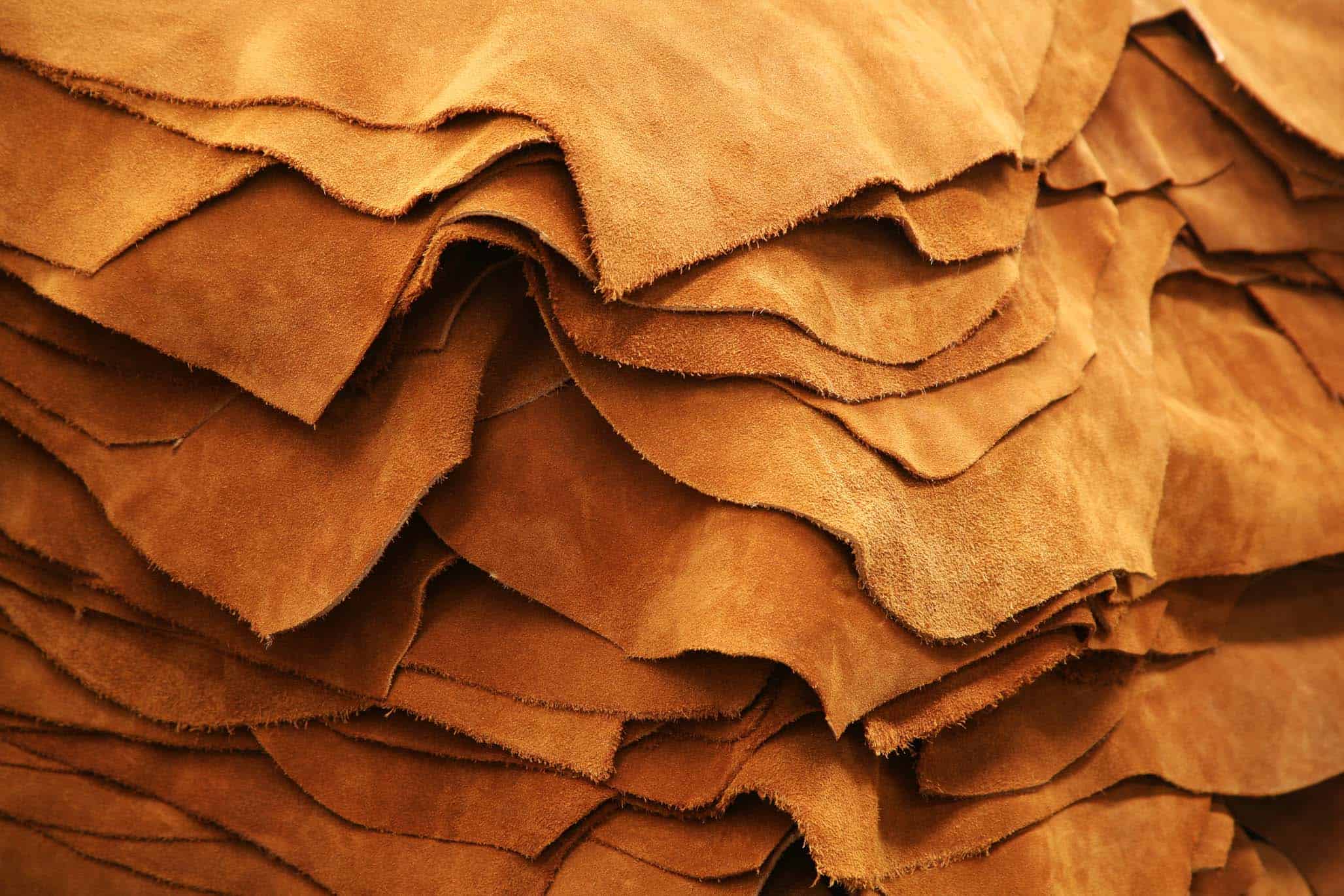
Illustrative image related to simulated leather fabric
Looking ahead, the simulated leather market is poised for growth, driven by evolving consumer preferences and technological advancements in fabric production. Now is the time for B2B buyers to explore and secure partnerships that will position them favorably in this expanding market. Embrace the future of upholstery by investing in simulated leather solutions that meet both aesthetic and functional needs.
Important Disclaimer & Terms of Use
⚠️ Important Disclaimer
The information provided in this guide, including content regarding manufacturers, technical specifications, and market analysis, is for informational and educational purposes only. It does not constitute professional procurement advice, financial advice, or legal advice.
While we have made every effort to ensure the accuracy and timeliness of the information, we are not responsible for any errors, omissions, or outdated information. Market conditions, company details, and technical standards are subject to change.
B2B buyers must conduct their own independent and thorough due diligence before making any purchasing decisions. This includes contacting suppliers directly, verifying certifications, requesting samples, and seeking professional consultation. The risk of relying on any information in this guide is borne solely by the reader.

Illustrative image related to simulated leather fabric



